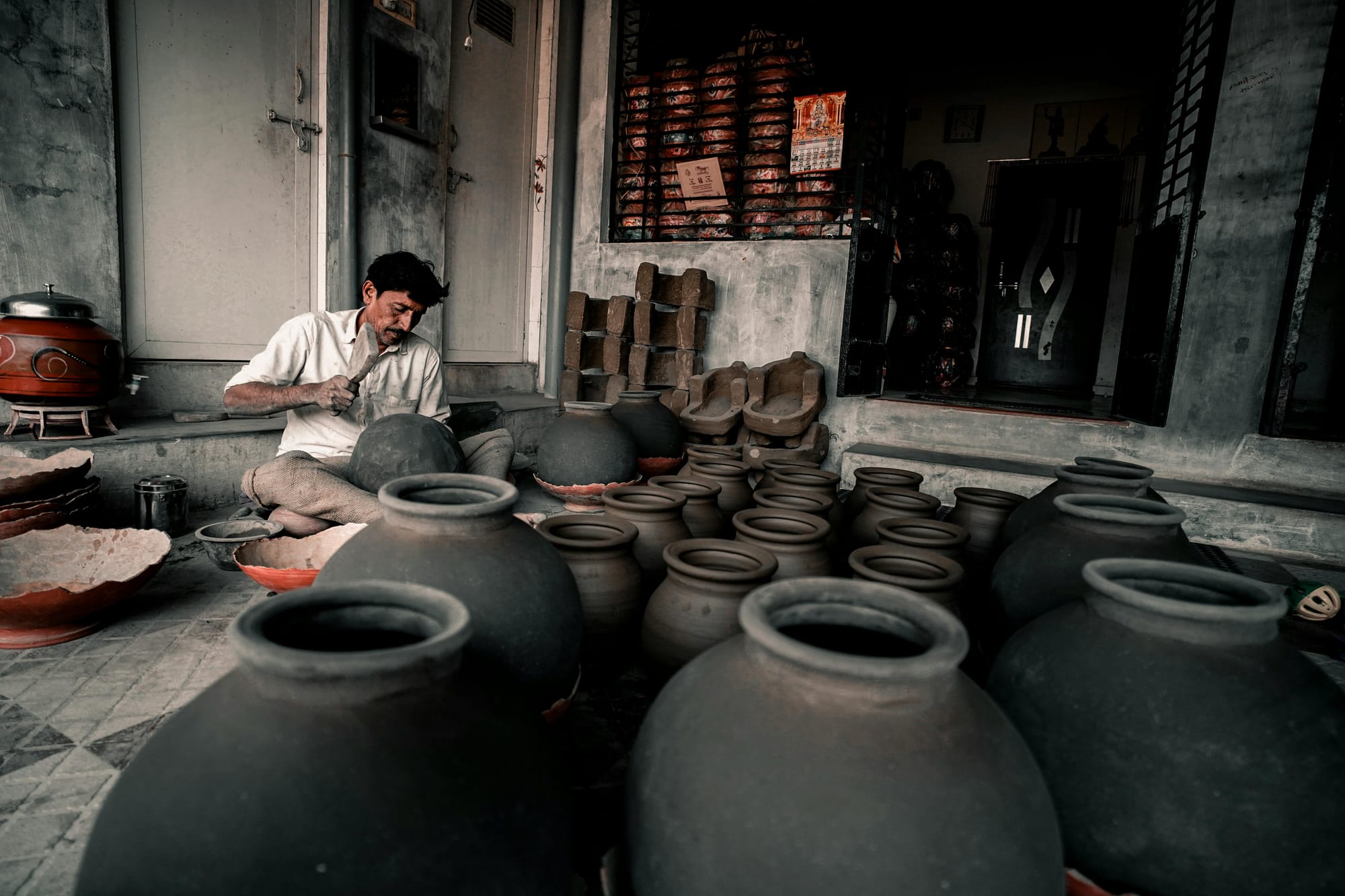

Festivals and celebrations are often associated with happiness and prosperity. Diwali, being one of the most revered festivals for its immense cultural and religious auspiciousness, harbors millions of stories that reshape perceptions. Today, Diwali is not just a festival; it is a thriving market. From carpenters and goldsmiths to small vendors on the street, the Diwali season proves to be the lifeline of the Indian retailers. But as the season ends, sales decline, and so does the means of livelihood of thousands of independent artisans.
As the Indian artisanal economy has evolved, certain stories overpower the others due to their sheer tragic nature. Ancient Indian artistry has witnessed the slow disappearance of many of its forms. Artisans have given up on the very art that was once their identity. One such story is the story of the Kumhars, the potter class of India.
Who are Kumhars?
Kumhars are considered to be the ancient Indian potters' class who mainly dealt with terracotta and fine clay pottery. The Kumhars derive their name from the Sanskrit word Kumbhakar, meaning earthen-pot maker.
In the ancient Indian civilizations, Kumhars’ work was considered significant, and they were celebrated for their craft. But as time passed, the Kumhars were given less importance in society. From being considered the descendants of Lord Prajapati Daksha, son of Lord Brahma, to barely being able to make ends meet, the story is rather devastating.

Current Condition of the Kumhars
Currently in India, every village contains at least one potter’s colony with a minimum of 1 family. According to a report by the Ministry of Micro, Small, and Medium Enterprises, states like UP, MP, Himachal, Haryana, Uttarakhand, etc total village population is found to be of the Potters community. The present status of the Indian red clay pottery industry is traditional and age-old in nature. The report also states that the activities are carried out on a household basis and are characterized by low technology and marred by low levels of production. The artisans themselves are the proprietors and work on their own capital. As scientific and technical knowledge is lacking due to illiteracy and poverty, the techniques of production remain inferior, and the products lack standardization. The market for the products is mainly local and partly extended to urban areas.
The Impact of the changing market
It is said that pottery and ceramics can withstand the test of time and act as evidence of human presence. The terracotta sculptures found in the Indus Valley Civilization are a great example of how pottery and art have had a place in society for centuries, and how they act as evidence of human creativity and excellence.
While buying your diyas for Diwali this year, have you ever wondered- where they are made? Who makes them? How much time does it take to make one diya?
The answer is quite interesting. Today, the world is ten times ahead of ancient civilizations, population-wise as well as technologically. Therefore, the market has evolved, and demands have risen. And to meet these demands, a bulk supply of these products is needed. This is where the involvement of machines comes into practice.
Human laborers cannot compete with machines. Machines prove to be a cheap investment with greater long-term benefits, hence the handmade products of the Kumhars now compete with machine-made products in a market that values profit more than art or artisans.
So the answer is quite simple: the cheap diyas and earthenware we buy from stores today are nothing but a machine-made replica of someone’s art.
Challenges faced by the Potter community
Competing with machines is one of the many challenges that the pottery community is facing. Other Challenges include:
- Lack of formal training: Most potters learn through family traditions, with limited exposure to design innovation or modern marketing strategies.
- Youth disinterest: Younger generations are increasingly shifting to other professions due to poor earnings and social status.
- Mechanization and modern ceramics: Machine-made ceramic and porcelain items dominate the market because they are uniform, durable, and widely available.
- Limited access to modern tools: Most Kumhars still rely on traditional hand-driven wheels and kilns, which limit productivity and consistency.
The Ministry of MSME states, “Through a traditional hand-driven potter wheel, the per day income of a potter reported is less than Rs 100; however, with an electric potter wheel, the income has been reported minimum of Rs 500 per day.”
- Lack of fair pricing: Middlemen often exploit potters, buying their products at low rates and selling them at much higher prices.

What is the Solution?
The Government of India has taken several steps to improve the quality of life of the Kumhars and revive their now forgotten art. One of the most important initiatives is the ‘Kumbhar Sashaktikaran Programme," which aims at enhancing the income and productivity of traditional pottery artisans in India through skill development and modern equipment.
But the problem still remains a glaring reality; the condition of the Kumhars remains the same. This is due to two major reasons: i) poor execution of Government Initiatives, and ii) the unwillingness of consumers to buy handmade products due to their relatively high pricing. Hence, the Kumhar community resorts to agricultural activities or to other, more promising and profitable professions.
Therefore, the need of the hour is for the Government to start working on the proper execution of its programmes. Another important change that needs to be made is in the mindset of consumers, which requires good advertising of the art and the initiatives. We as consumers, need to be aware of the difference between handmade and machine-made products.
